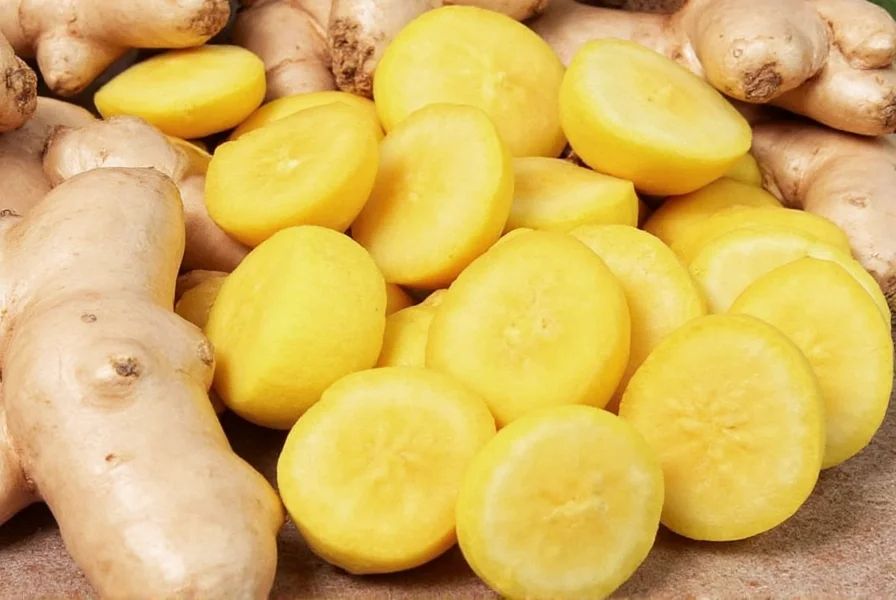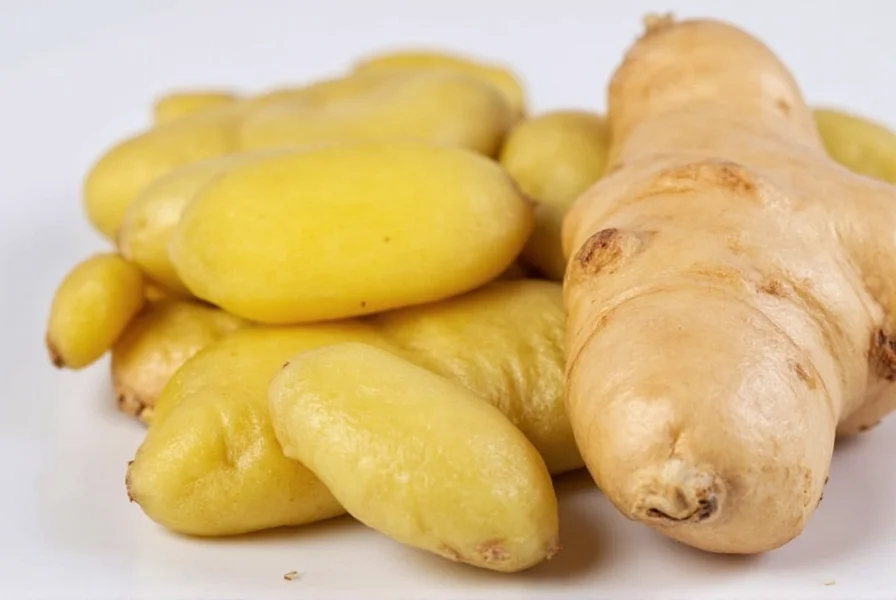Preserving fresh ginger properly can significantly extend its shelf life while maintaining flavor and potency. Whether you've bought a large quantity at the market or received a generous gift of this versatile root, knowing the right storage techniques prevents waste and ensures you always have ginger ready for cooking, baking, or making teas.
Understanding Ginger's Natural Properties
Ginger root contains high moisture content which makes it susceptible to mold and drying out. The papery skin provides natural protection, so keeping ginger unpeeled until use is the first step in preservation. When stored properly, fresh ginger maintains its pungent flavor and medicinal properties far longer than when left at room temperature.
Refrigeration Methods for Short-Term Storage
Refrigeration remains the most accessible method for keeping ginger fresh for several weeks. The key is managing moisture levels to prevent both mold growth and dehydration.
Whole Ginger Storage
For uncut ginger roots, follow these steps:
- Keep ginger unpeeled
- Wrap loosely in a paper towel to absorb excess moisture
- Place in an airtight container or resealable plastic bag
- Store in the vegetable crisper drawer of your refrigerator
This method typically preserves ginger for 3-4 weeks. Check weekly and replace the paper towel if it becomes damp.
Storing Cut Ginger
When you've cut a piece from the main root:
- Place the remaining ginger in a small container with a tight-fitting lid
- Add a teaspoon of water to maintain humidity
- Store upright with the cut side facing up
- Use within 1-2 weeks for best quality
Freezing Techniques for Long-Term Preservation
Freezing ginger preserves both flavor and texture remarkably well, making it an excellent option for long-term storage without significant quality loss.
Whole Root Freezing
Freezing entire ginger roots requires minimal preparation:
- Wash and thoroughly dry the ginger (no need to peel)
- Place whole roots in freezer bags, removing as much air as possible
- Freeze for up to 6 months with minimal quality degradation
The beauty of this method is you can grate frozen ginger directly into dishes without thawing. The skin peels off easily after freezing.
Grated Ginger Freezing
For immediate cooking use:
- Peel and grate fresh ginger
- Portion into teaspoon measurements in ice cube trays
- Pour a small amount of water or neutral oil over each portion
- Freeze solid, then transfer to labeled freezer bags
This technique, perfect for how to keep ginger fresh for cooking, provides ready-to-use portions that maintain potency for 6-12 months.

Alternative Preservation Methods
Beyond refrigeration and freezing, several other techniques work well for proper storage for fresh ginger, particularly when you need extended shelf life.
Vinegar or Alcohol Preservation
Submerging ginger in vinegar or alcohol creates an antimicrobial environment:
- Peel and slice ginger into thin pieces
- Place in a clean glass jar
- Cover completely with rice vinegar, apple cider vinegar, or vodka
- Store in refrigerator for up to 6 months
This method not only preserves ginger but creates flavored vinegar perfect for Asian cuisine. The ginger retains its texture and can be used directly in recipes.
Drying Ginger
For those interested in how to extend the shelf life of ginger without refrigeration:
- Slice ginger thinly (1/8 inch)
- Arrange on dehydrator trays
- Dehydrate at 135°F (57°C) for 8-12 hours
- Store in airtight container away from light
Dried ginger lasts indefinitely when stored properly and can be rehydrated or ground into powder.
| Storage Method | Shelf Life | Best For | Quality Preservation |
|---|---|---|---|
| Refrigerator (whole) | 3-4 weeks | Regular cooking use | Excellent |
| Freezer (whole) | 6+ months | Long-term storage | Excellent |
| Freezer (grated) | 6-12 months | Immediate cooking needs | Very Good |
| Vinegar preservation | 4-6 months | Asian cuisine, pickling | Good |
| Drying | Indefinite | Teas, powdered use | Fair to Good |
Recognizing When Ginger Has Spoiled
Knowing how to identify spoiled ginger prevents food waste and ensures safety. Discard ginger showing any of these signs:
- Mold growth - fuzzy spots in white, green, or black
- Soft, mushy texture - especially when accompanied by dark spots
- Unpleasant odor - sour or fermented smell
- Deep wrinkles - indicating significant moisture loss
Slight wrinkling is normal and doesn't necessarily mean the ginger has spoiled. Simply cut away any dry sections before use. For those concerned about how to keep ginger from molding, proper moisture control during storage is essential.
Pro Tips for Maximum Freshness
Implement these professional techniques to get the most from your ginger:
- Always buy firm ginger with tight skin and no soft spots
- Store ginger away from strong-smelling foods as it can absorb odors
- Never wash ginger until ready to use
- For storing ginger in the refrigerator, change paper towels weekly to maintain optimal moisture levels
- Label frozen ginger with dates to track freshness
Frequently Asked Questions
How long does fresh ginger last in the refrigerator?
When stored properly in the refrigerator—unpeeled, wrapped in paper towels, and placed in an airtight container—fresh ginger typically lasts 3-4 weeks. Cut ginger will remain fresh for 1-2 weeks when stored upright in a container with a small amount of water.
Can you freeze fresh ginger without losing quality?
Yes, freezing is one of the best methods for freezing ginger for long term storage. Whole ginger roots maintain excellent quality for 6+ months in the freezer. You can grate frozen ginger directly into recipes without thawing, and the skin peels off easily after freezing.
What's the best way to store cut ginger?
For cut ginger, place the remaining piece in a small container with the cut side facing up, add a teaspoon of water to maintain humidity, and store in the refrigerator. This method keeps cut ginger fresh for 1-2 weeks. Replace the water every few days for optimal results.
Does storing ginger in water work effectively?
Storing cut ginger in water can work short-term (up to 1 week), but it's not ideal for long-term storage as it can cause the ginger to become waterlogged and lose flavor. A better approach is to store cut ginger upright with just a small amount of water in the container to maintain humidity without submerging the root.
How can I tell if my stored ginger has gone bad?
Signs that ginger has spoiled include mold growth (white, green, or black fuzzy spots), a soft or mushy texture, an unpleasant sour or fermented odor, and deep wrinkles throughout the root. Slight surface wrinkles are normal and don't necessarily indicate spoilage—simply cut away dry sections before use.











 浙公网安备
33010002000092号
浙公网安备
33010002000092号 浙B2-20120091-4
浙B2-20120091-4